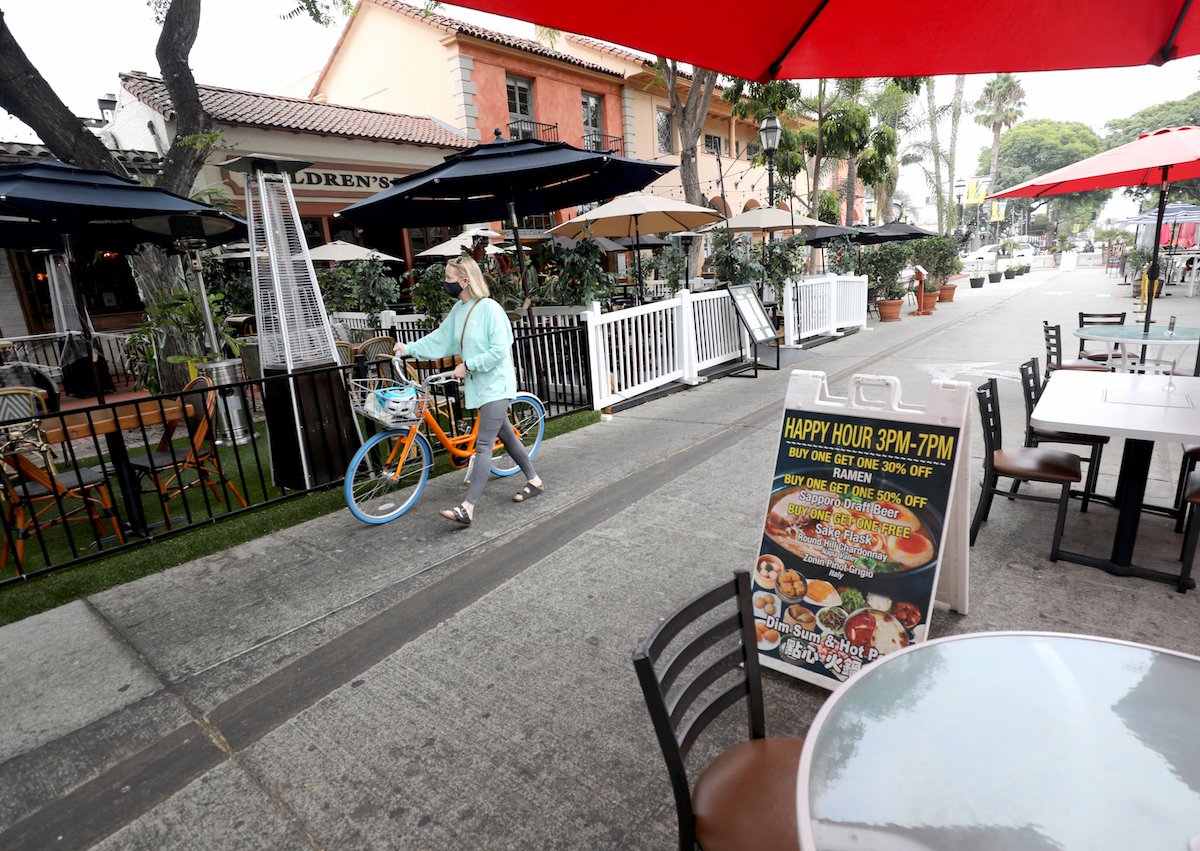The Future of State Street
How Much of Downtown Santa Barbara’s Main Street Should Close?

The City of Santa Barbara seems to be rushing toward a closure of State Street to traffic and the creation of a “pedestrian promenade.”
The City Council has formed a sub-committee on the future of State Street, which seems to be considering not if we should close State, but how much of it we should close.
They are being aided in this by city staffers who are acting as advocates for closing State Street — and openly suggesting using the COVID crisis as a means to that end.
A recent survey with over 4,000 respondents found substantial support for the creation of a downtown “promenade.” We are unaware, however, of a similar effort to gauge the support of downtown businesses and property owners.
Before the city embarks on a path that may be hard to reverse, we think there are a number of questions that are not being fully addressed. Moving forward on this project without serious and thorough consideration of these and other issues may lead to huge problems and many unintended consequences.
In 1991, the 101 Highway stoplights were finally removed and the underpasses at State and Garden opened. The Santa Barbara beach area and the downtown were finally connected and easily accessible. Many of us remember the days when locals never headed to the beach on weekends because of the traffic back-ups and long waits at the stop lights. The development of the State Street area near the beach would never had been feasible or possible without the free flow of traffic afforded by the underpasses.
If, as is being planned, State Street is closed near the Gutierrez or Haley intersections, we will be effectively severing the connection of the beach area to downtown and vice versa. With even the closure of a few blocks of State we will be recreating the obstacles the freeway underpasses were designed to eliminate. Do we really think this is the best way to revitalize State St. and the downtown corridor?
Vehicle traffic, locals, visitors, commercial deliveries will be left with only two ways to cross the 101 — Garden Street and Castillo. Both of these diversions into the downtown area are narrow and difficult and not suited to a large volume of traffic. And neither of them provides easy access to the downtown and State Street area.
Along with the above, the following issues and questions should be considered before the city commits to the closure of State Street and the creation of a pedestrian mall.
(1) If the current roadbed is to be the new “promenade” it will have to be raised to the level of the sidewalks. What will the expense of that be? And what will happen if, in 10 years, we decide to reverse it?
(2) Which blocks of State? Are we going to be picking winners and losers? What happens to a property or business owner who is adversely affected by the city’s actions?
(3) Bikes, ebikes, skateboards, etc. are not, per the California Vehicle Code, allowed on a pedestrian area. A senior city traffic engineer recently noted that bikes and pedestrians don’t mix, speaking about the beach area near the wharf. How will we delineate this in an open mall while protecting public safety?
(4) Speaking of public safety, can emergency crews and vehicles easily access the promenade if there are impediments, installations, restaurant seating, etc. preventing access? The elimination of two-way vehicle traffic on State alone will possibly cause delays to any emergency response. This could be a life-or-death question.
(5) Circulation: At peak times, Anacapa and Chapala are heavily travelled. If we remove the two-way traffic on State at the center of our downtown grid, will we end up with gridlock on those and other streets?
(6) What recourse will be available to commercial property owners if they find their property values decline because of the city’s actions in closing State?
(7) How will the closure of State impact what is called the “homeless” problem? Do we really think that a closed pedestrian mall will not attract more vagrancy? Are we prepared to deal with that? Experience tells us the answer is No.
(8) Some of the conceptual plans for the “promenade” actually have the city narrowing the existing sidewalks and adding even more obstacles. Why? Many of us believe a simple remodel of State Street following the example of lower State near the beach would provide the same “pedestrian promenade” experience. Remove the massive planters, structures, over-plantings etc. and open up the existing 18-foot to 24-foot sidewalks — leaving plenty of room for sidewalk dining and pedestrians both. Maintain the existing bike lanes in the street and the traffic flow as is without completely changing the essential nature of State Street.
In the 1960s we eliminated traffic lanes and parking on State Street and created extra-wide sidewalks to achieve a pedestrian “promenade” character. Then we proceeded to clutter them with obstacles. We built and maintained public parking lots to compliment that circulation grid. If the city moves quickly forward with closing State Street, we risk undoing all of that work — with little or no planning.
The closure of streets to create “pedestrian malls” is an urban planning relic of the ’70s and ’80s. In many cities they led to the loss of businesses and urban blight. They have a mixed history, and we should study both the failures and successes.
State Street is one of the iconic and historic Main Streets in America. Let us please take the time to fully study the potential impacts of closing it to create a pedestrian “mall” before we commit ourselves to redesigning downtown on the fly, in the middle of a pandemic.
Kevin Boss and Jim Knell are business owners and downtown property owners.



